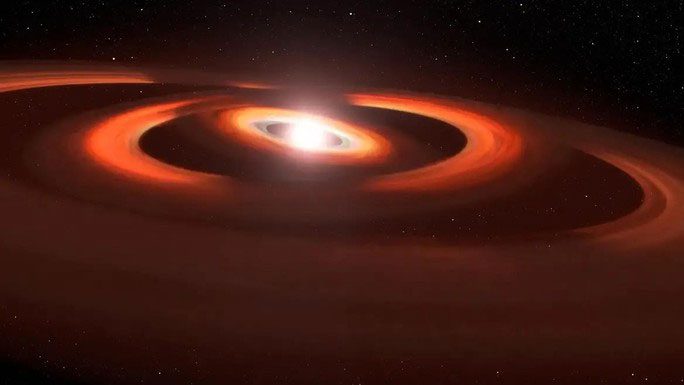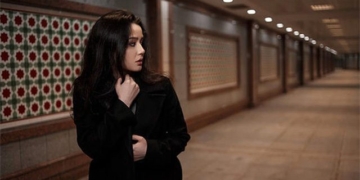In 2017, through images captured by Hubble, astronomers reported seeing a strange shadow sweeping across the surface of a massive pancake-shaped disk of gas and dust surrounding the red dwarf star TW Hydrae.
This “ghost” is not from a planet, but from another gas and dust disk, much smaller and slightly tilted compared to the outer disk. Recently, a second ghost has continued to appear.

An enigmatic world with two “ghosts” captured by Hubble – (Image: NASA/AURA/STScI).
According to SciTech Daily, it has been identified as a second gas and dust disk. Both of these “ghosts” have provided a spectacular view of two planets at a previously unseen stage, two embryos yet to take shape.
The research team, led by astronomer John Debes from the Space Telescope Science Institute in Maryland, USA, and the European Space Agency (ESA), stated that these are also two protoplanetary disks completely different from those previously known.
Initially, only one was observed because they appeared as one, or at least were close together and behaved in the same way. Suddenly, these two ghosts separated and began to show that they are two distinct disks, functioning differently, with slightly different orbital planes.
This has left scientists both puzzled and intrigued, as it may reveal unknown aspects of how a planet is formed.
Initial data suggests that these young planets lie in a region with a distance comparable to that of Jupiter from the Sun, orbiting their parent star every 15 years, with an orbital plane tilted by 5-7 degrees compared to the main protoplanetary disk of their parent star.
Interestingly, this aligns perfectly with the “architecture of the Solar System,” potentially providing astronomers with a “window” into the past, to infer how our world formed.
The protoplanetary disk of the parent star also consists of inner and outer disks, with the outer disk possibly having a radius several times that of the Kuiper Belt of the Solar System. This disk also has a peculiar gap at a distance twice that of Pluto from the Sun, suggesting the possibility of a third planet.
This research was recently published in The Astrophysical Journal.





















































